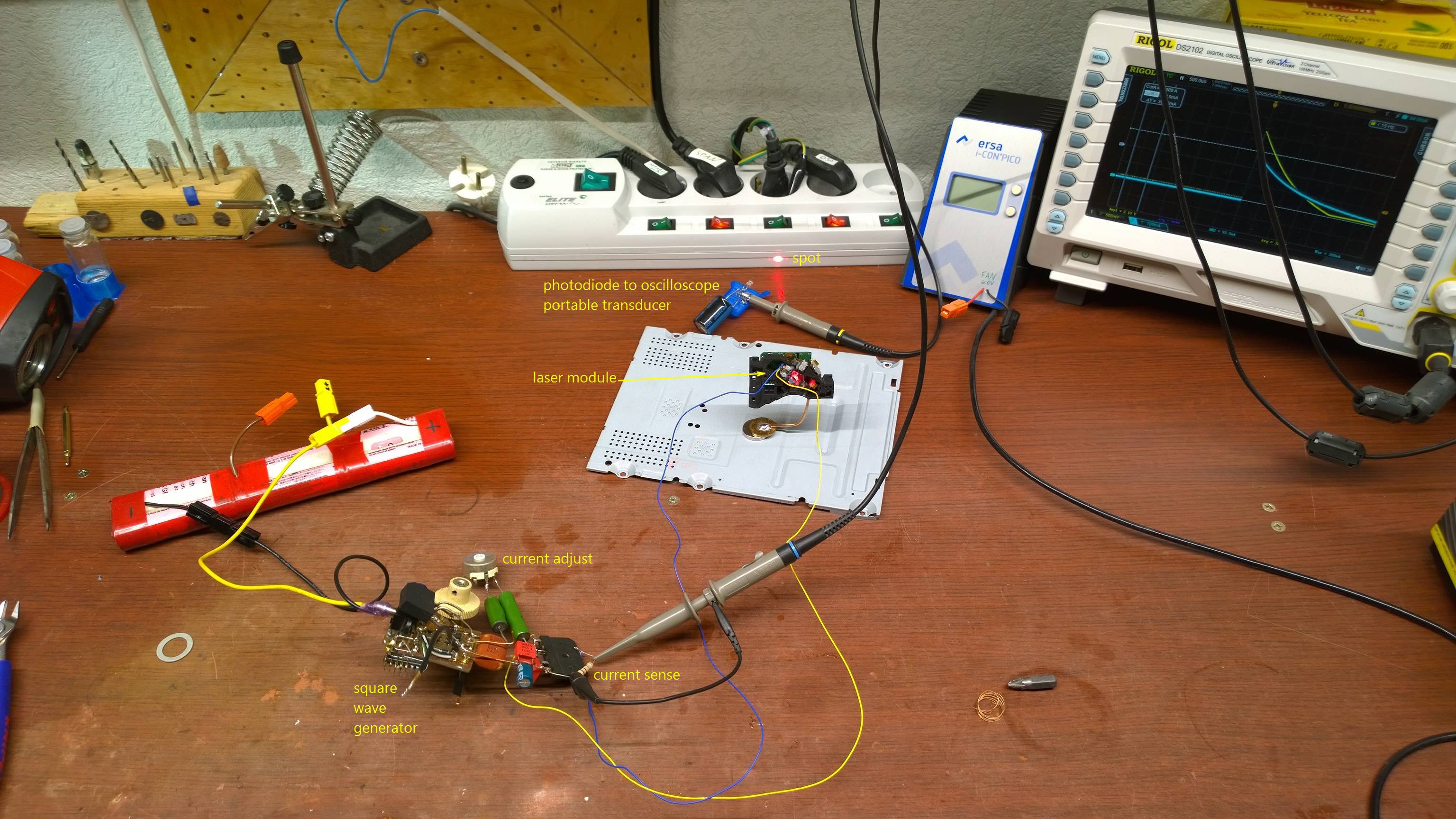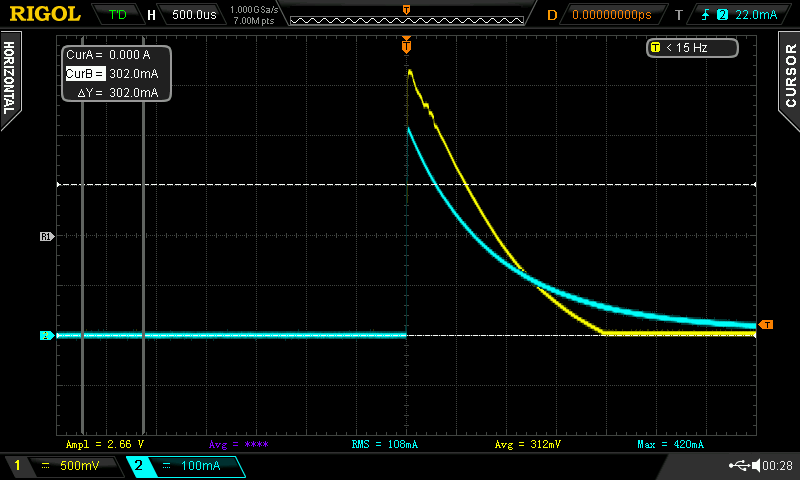I've set up a rig to measure intensity vs current relationship for the diode.
Why? Because I'm expecting to see a saturating curve similar to those of LEDs. From that, I can guess max drive current - the one of LEDs is often around the point where the drop becomes apparent, but not seriously close to saturation.
I assume, that if I do pulse testing, I can probably seriously overdrive the laser diode, without causing serious damage. So off we go.
I've set up a simple circuit, where a capacitor (47uF) is discharged starting from 12 V through a 20-150 ohm resistor (adjustable) in series with the laser diode. This is done periodically, with an adjustable frequency of about 5 Hz.
The current and brightness waveforms are captured by 2-ch oscilloscope, and from these captured curves I can plot intensity vs current characteristic of the diode.

Once this was set up, it didn't take long to measure the curve.

This is what I get on the scope. Note that noisy part in the intensity plot (yellow) at highest currents! That is not noise! It perfectly reproduces at each pulse, and it is tied to diode current (if I adjust it, the noisy patch moves, and completely disappears if current does not exceed 300 mA). Interesing.
What's going on? I have no idea, but I'm sure it is the laser! Well, at least, I certainly excluded photodiode transducer, and the current waveform is also clean, so it's not something in the low-ohmic trimpot...
If you have any ideas, on why laser diode intensity vs current curve can have irregularities, or if anything else can be happening due to my setup... let me know in the comments!
Another thing to note is that the intensity drops to almost zero abruptly at about 50 mA. This, I think, is due to lasing threshold. It still glows at lower currents, but that can only be seen in the dark.
Finally, here's the intensity-vs-current plot!

 DeepSOIC
DeepSOIC
Discussions
Become a Hackaday.io Member
Create an account to leave a comment. Already have an account? Log In.
There are two limitations in driving laser diodes, and only the first one is well familiar to everyone, because it applies to everything else including plain LEDs---namely the total power dissipation. As you say, you can get away with overdriving the pulse current but keeping the average value below the power limit.
The second limitation has to do with the electric field in the laser cavity: if you exceed that, you end up blowing off the resonating mirrors at the sides of the lasing medium. PWM doesn't help here: even instantaneous overdrive can damage the optics. The result of this damage is permanently uncollimated, blotchy output beam.
Now, the power limit is of course smaller than the E-field limit, but is it probably just a little smaller. In an optimally-designed unit, the limits should more-or-less match, but we have no way of knowing the E-field limit, and I can't think of a way to test it, other than destructive testing :)
Are you sure? yes | no
Awesome data, as I've said before. Quite the handy project, here.
Great technique running these things off (separate) batteries/caps, too... Then it's like your 'scope has differential probes! Hadn't thought of that before!
Are you sure? yes | no